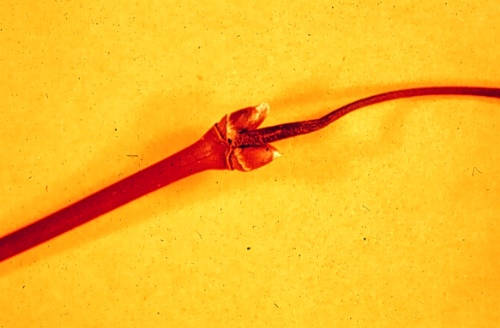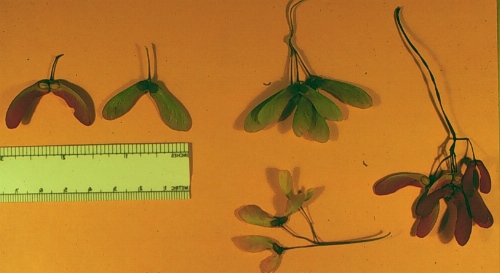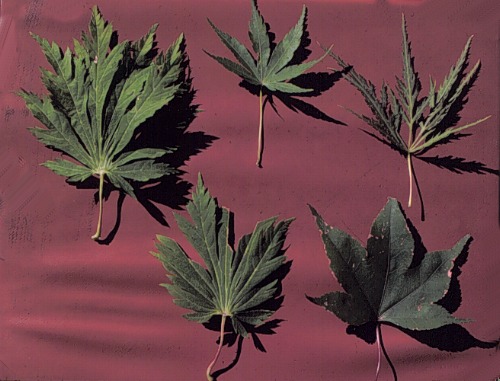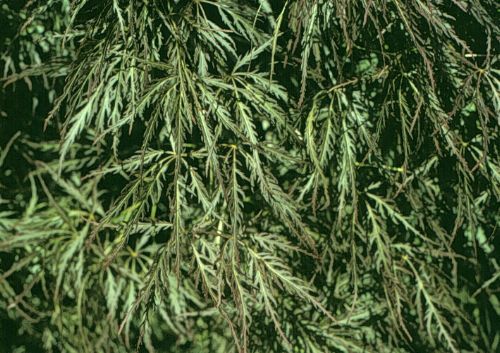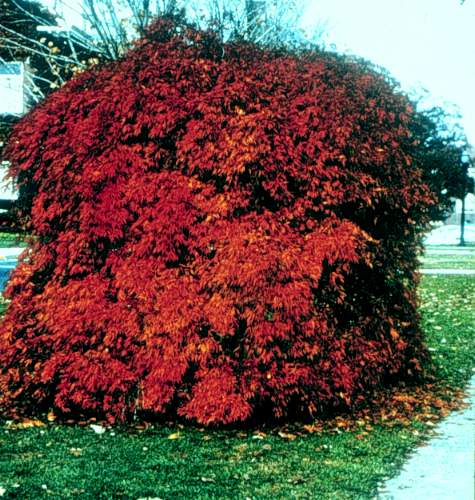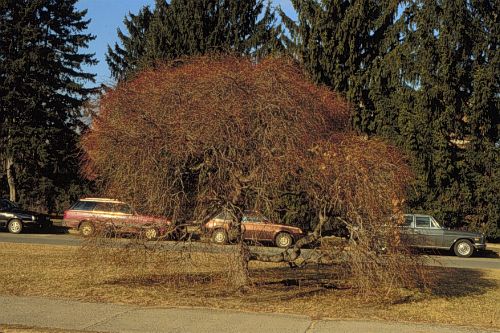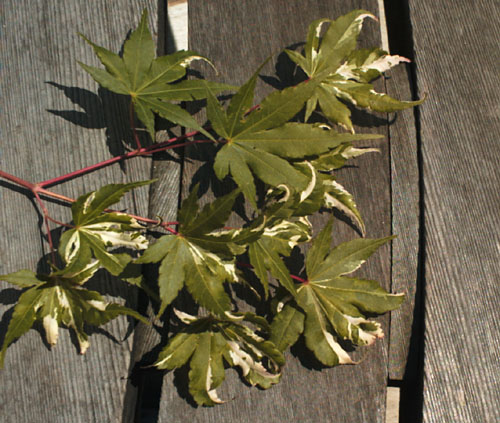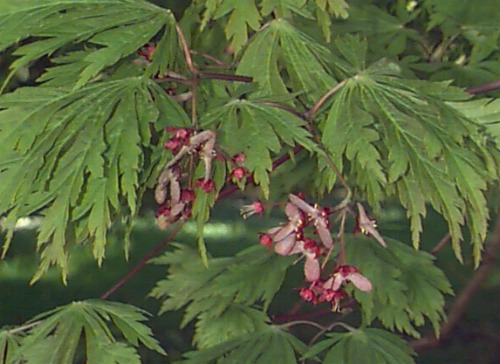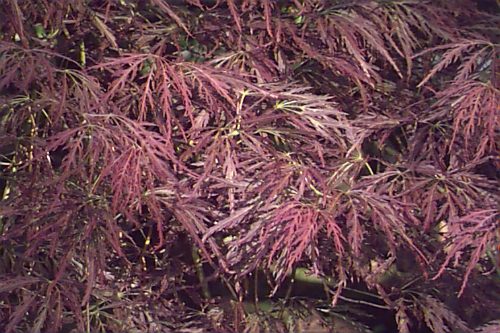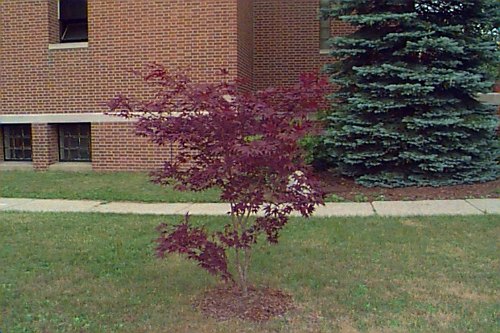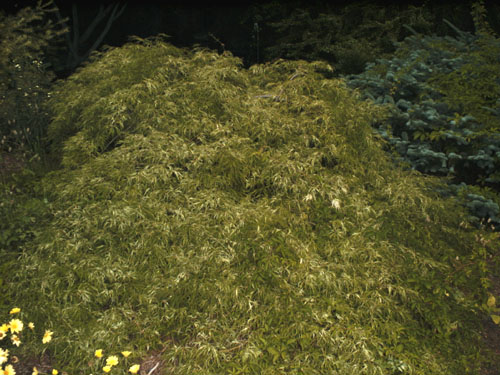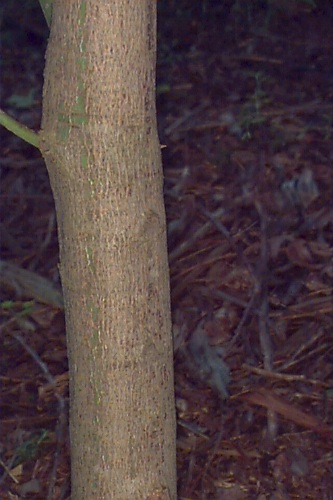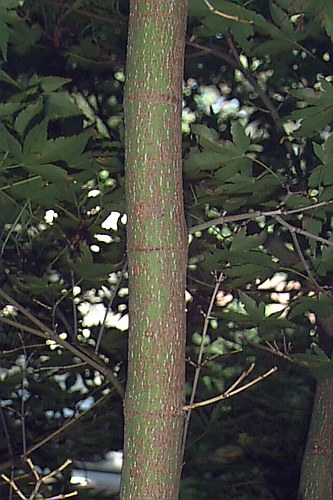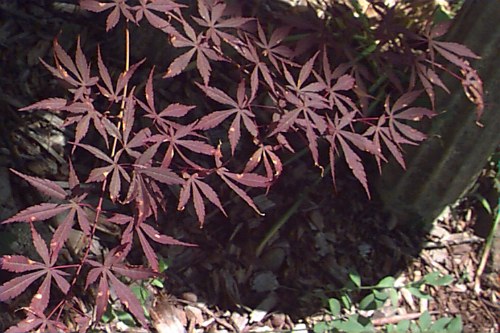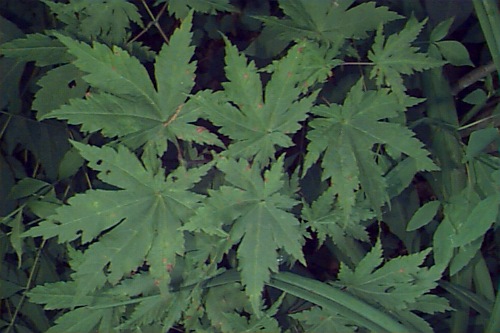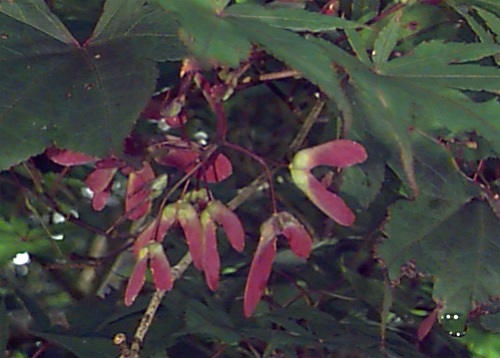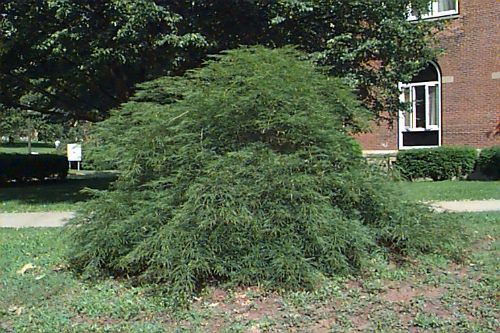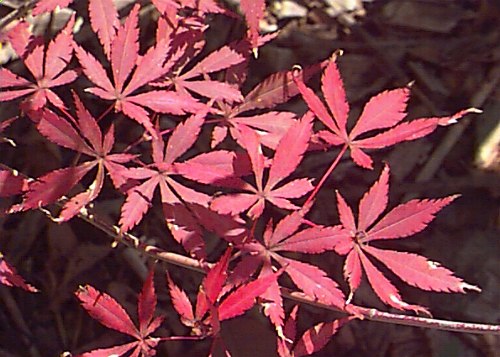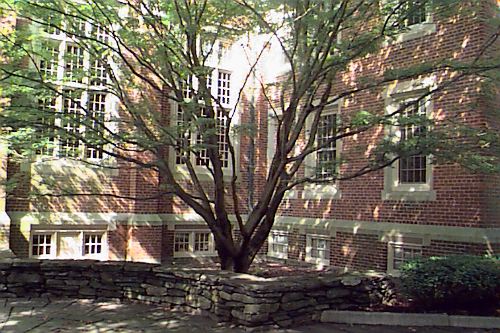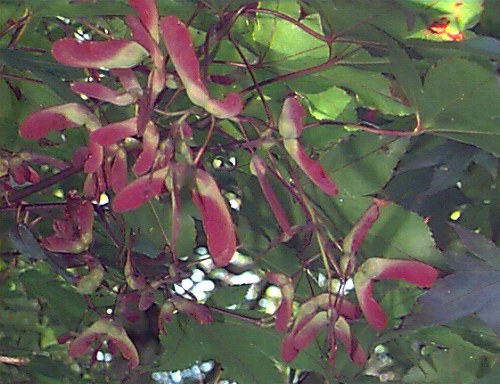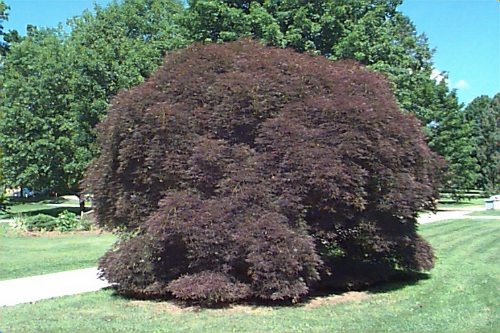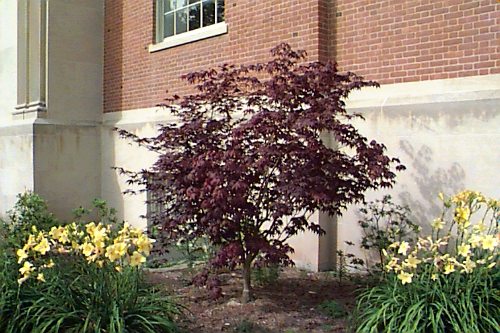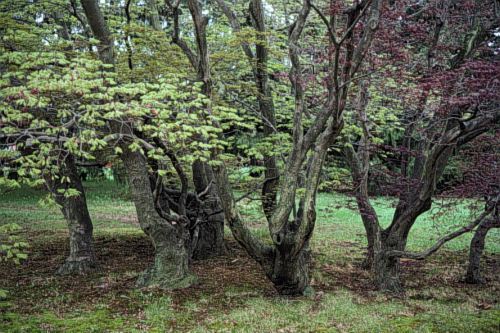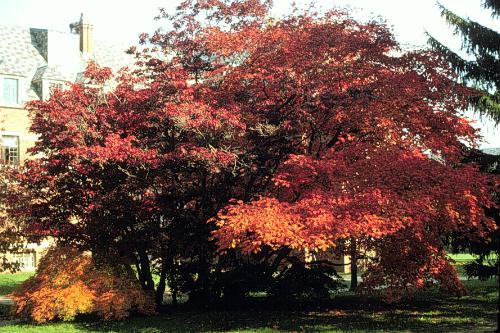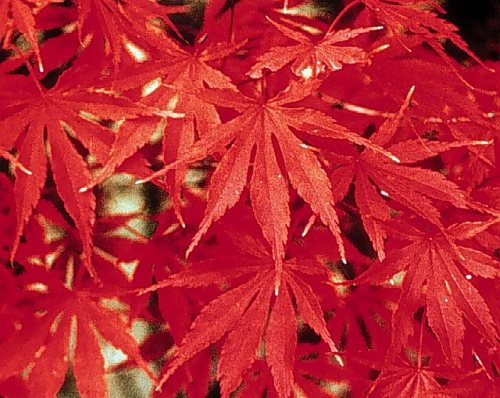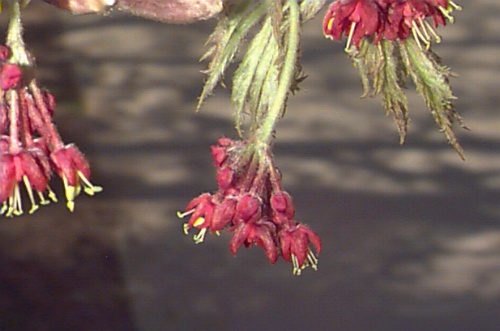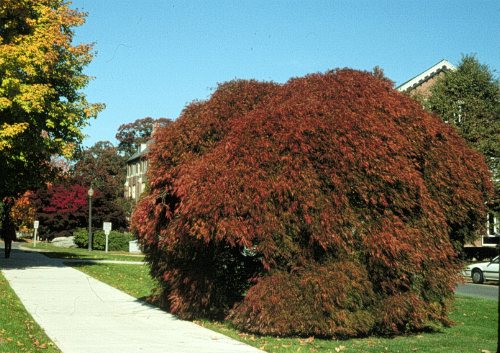Acer palmatum
Japanese Maple
Aceraceae
ExpandHabitat
- native to Japan, China, Korea
- zone 5 for many, while other selections are only reliable to zone 6 or warmer
- an understory tree in its natural setting
Habit and Form
- small deciduous tree 15' to 25'
- shape can be rounded to irregular
- habit and form is variable since most cultivated plants are various cultivars
- texture fine to medium
- growth rate is slow
Summer Foliage
- opposite, 2" to 5" long, medium green color
- 5, 7 or 9 lance-shaped lobes, palmately arranged
- excellent quality summer foliage
Autumn Foliage
- turning yellow, orange, red or purple
- dependable for fall coloration
- color develops late and leaves hold well
Flowers
- small, red or purple, in May and June
Fruit
- samaras 0.5" to 0.75" long
- generally reddish tinged green, but some are just green
Bark
- twigs have green and red, polished, shiny bark that is showy
- trunk and main branch bark is gray
- stem and bark color is a valuable ornamental feature
Culture
- full sun to partial shade is best; shade tolerant
- moist, slightly acidic, well-drained, high organic matter soil is ideal
- often stated to be delicate plants, but probably more adaptable than given credit for
- dislikes hot, dry locations
- avoid windswept winter locations
Landscape Uses
- specimen plant, especially cultivars
- accent plant for artistic appearance
- rock gardens
- in mini-groves
- avoid over use of colored foliage selections
- possesses multiseason interest (summer foliage, fall foliage color, twig and bark color and quality)
Liabilities
- relatively pest and maintenance free
- twig kill, bark split and lack of winter hardiness can be a problem with some selections
- spring frosts can damage emerging leaves
ID Features
- 5 to 9 palmately-lobed, dissected leaves
- twig bark color of red and green
- twigs glabrous; Acer japonicum twigs may be slightly pubescent with long hairs
- terminal bud absent
- bud bases surrounded by a hairy, papery sheath, giving the appearance of a hula skirt around the buds
Propagation
- by seed
- cultivars generally grafted
- cultivars also by softwood stem cuttings
Cultivars/Varieties
A complete discussion of the range of Acer palmatum cultivars is beyond the scope of this forum, as hundreds exist. Listed below are some of the more common cultivars. For more detailed listings, consult a reference book or specialty catalog.
var. atropurpureum - Leaves are reddish purple when they emerge, but typically fade to green by July. Fall color is red. Less expensive to buy than red foliage cultivars that retain red foliage throughout summer.
var. dissectum - Trees have leaves that are finely cut and incised. Leaves have 7, 9 or 11 lobes. Texture is fine and leaves can appear threadlike.
'Bloodgood'- has rosy foliage in early summer that darkens to burgundy by mid-summer. Was selected because of its excellent color retention. A relatively slow growing, upright to rounded form that reached 15' to 20'. Very commonly grown and offered.
'Butterfly' - A true variegated form with gray/green leaves featuring a white/pink margin. A slow grower, only reaching 15' with age.
'Crimson Queen'- a red foliage form with dissected leaves and weeping or arching branching. Slow growing, ultimately reaching 8' to 10' tall and 12' wide.
'Sango Kaku' - An upright tree reaching 25' tall. Notable for the vivid red coloring of the young stems that make it a fine beacon in the winter landscape. The coloring is only prominent on the new growth, however, as it fades to gray with age.
'Shaina' and 'Sharp's Pygmy' - Two common dwarf cultivars which form dense, rounded trees that seldom exceed 4'-6' tall.
'Versicolor' - A strong-growing, hardy form developing into an upright tree of about 25 feet in 30 to 40 years. The leaves are deep green with varying amounts of white in streaks, blotches and flecks.
'Viridis'- a mounded form with bright green dissected foliage. Orange-gold fall foliage.
